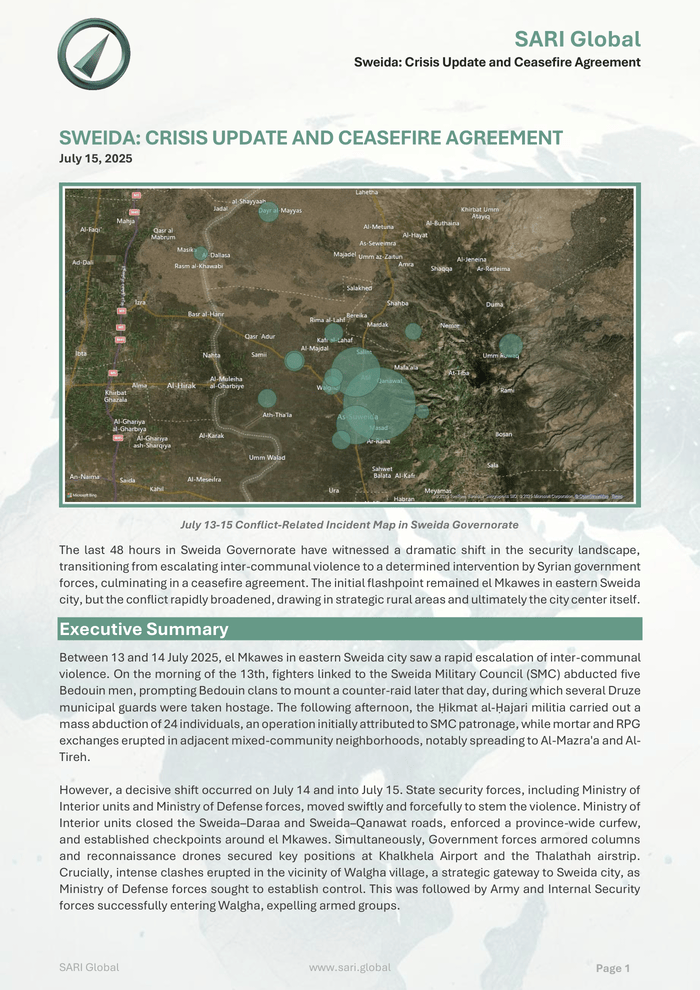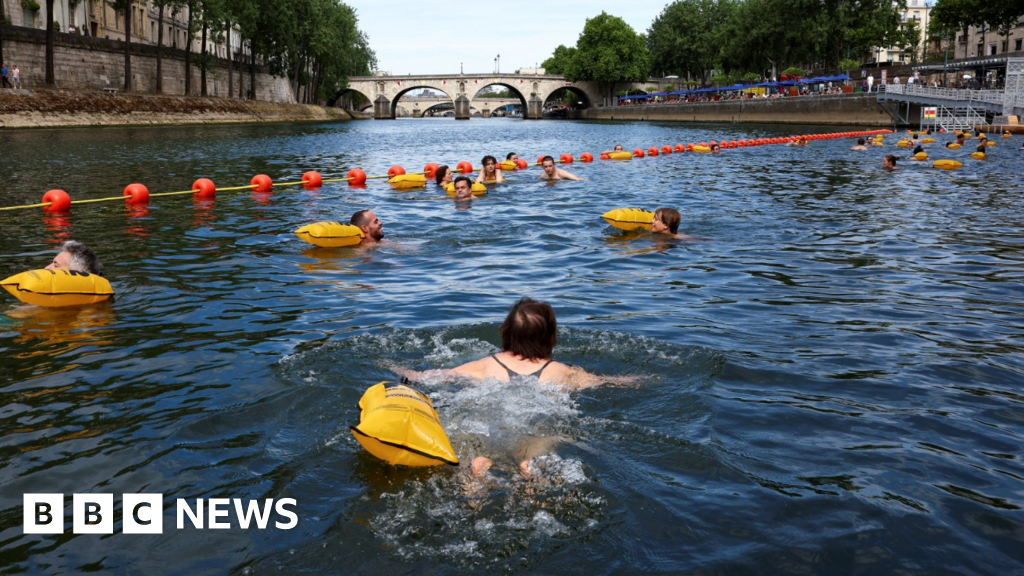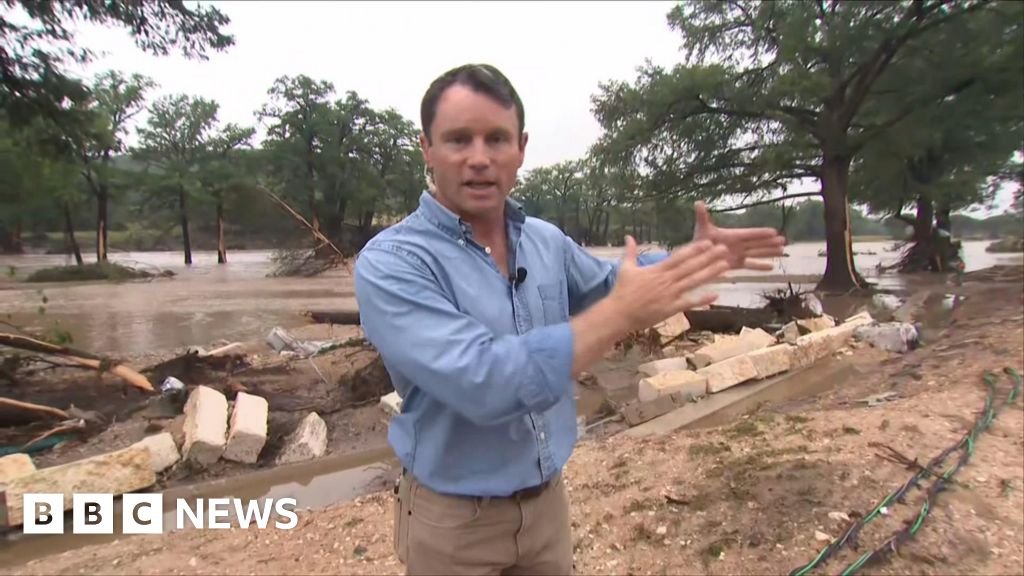Between 13 and 14 July 2025, el Mkawes in eastern Sweida city saw a rapid escalation of inter-communal violence. On the morning of the 13th, fighters linked to the Sweida Military Council (SMC) abducted five Bedouin men, prompting Bedouin clans to mount a counter-raid later that day, during which several Druze municipal guards were taken hostage. The following afternoon, the Ḥikmat al-Ḥajari militia carried out a mass abduction of 24 individuals, an operation initially attributed to SMC patronage, while mortar and RPG exchanges erupted in adjacent mixed-community neighborhoods, notably spreading to Al-Mazra’a and AlTireh.
However, a decisive shift occurred on July 14 and into July 15. State security forces, including Ministry of Interior units and Ministry of Defense forces, moved swiftly and forcefully to stem the violence. Ministry of Interior units closed the Sweida–Daraa and Sweida–Qanawat roads, enforced a province-wide curfew, and established checkpoints around el Mkawes. Simultaneously, Government forces armored columns and reconnaissance drones secured key positions at Khalkhela Airport and the Thalathah airstrip. Crucially, intense clashes erupted in the vicinity of Walgha village, a strategic gateway to Sweida city, as Ministry of Defense forces sought to establish control. This was followed by Army and Internal Security forces successfully entering Walgha, expelling armed groups.
The most significant development came as Internal Affairs and Defense Ministry forces infiltrated Sweida city center amidst intermittent clashes and pursuits of armed individuals within residential areas. The Internal Security Commander in Sweida Governorate announced the entry of these forces to enhance security and impose a curfew. This robust intervention was welcomed by the Spiritual Presidency of the Unitarian Druze community in Syria, who called on all armed factions to cooperate and surrender their weapons. By the end of July 14 and into July 15, at dozens of people killed, and more than 150 wounded in the initial inter-communal clashes. Subsequent fighting during the government’s intervention saw an ambush in Sweida city, resulting in approximately 30 additional deaths, including Abdul Rahman Al-Eid from Shagara town in rural Daraa, and one General Security element. Amidst these developments, power outages, road closures, and emerging displacement have been reported.
Notably, while the SMC remains separate from Harakat Rijal al Karamana and Kuwat Shikh al Karama (the latter two retaining ties to Ministry of Interior units), the overarching narrative has shifted to one of state reassertion rather than fragmented militia control.
Despite the Syrian government affirming their role as peacekeeping, Israeli warplanes continued to strike targets in Sweida province. On July 14, they engaged Syrian Army tanks near Smai village, deployed thermal balloons over the western countryside, and carried out an airstrike adjacent to As-Sweida city, specifically striking Al-Mazra’a village. These strikes, aimed at government assets, continue to be framed by Israeli sources as efforts to protect the Druze community in Sweida. The death of Youssef Al-Masalma from Daraa Al-Balad in one of these Israeli airstrikes highlights the external complexities of the conflict.



